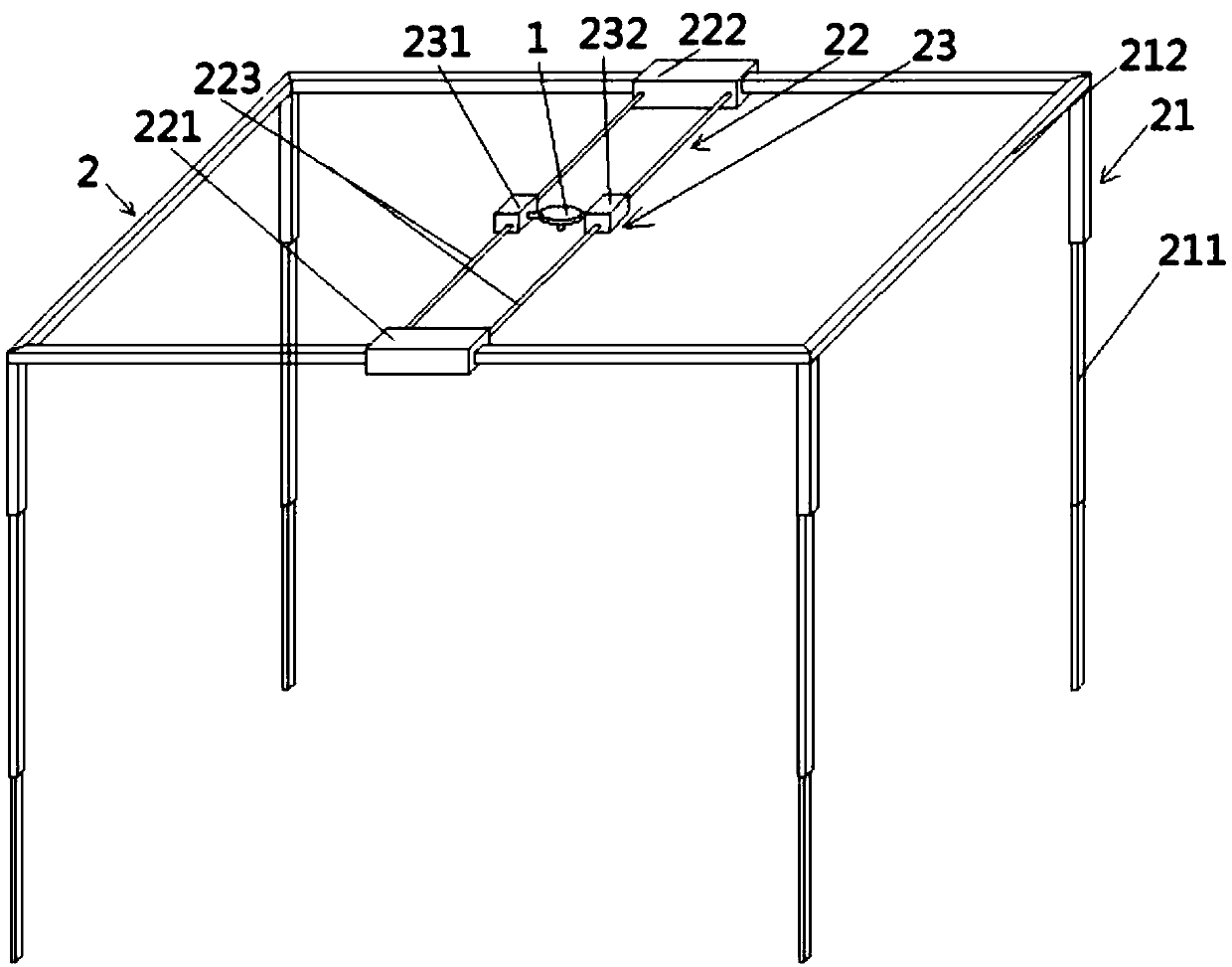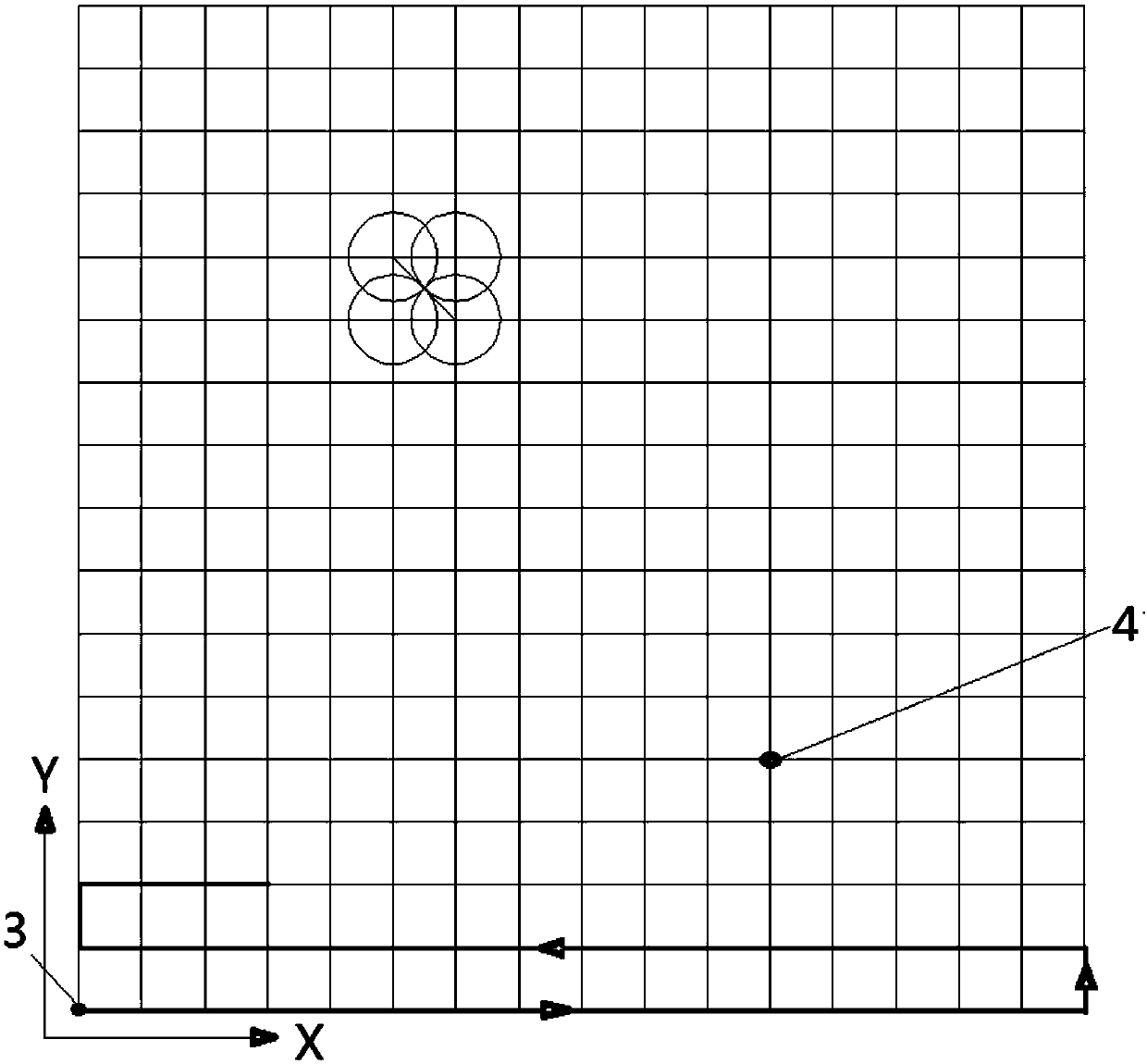Push-broom LiDAR-based soil surface morphology monitoring device and soil surface morphology monitoring and data analysis method
A soil surface and monitoring device technology, applied in the field of soil research tools, can solve the problems of inability to reflect surface fluctuations and expansions, inability to measure soil three-dimensional shape information, and application limitations, so as to reduce the problem of missing soil surface information and make up for scanning Small range, avoiding the effect of external light interference
- Summary
- Abstract
- Description
- Claims
- Application Information
AI Technical Summary
Problems solved by technology
Method used
Image
Examples
Embodiment 1
[0038] This soil surface morphology monitoring device based on push-broom LiDAR includes push-broom laser ranging radar 1, radar carrying platform 2, and data processing center (not shown in the figure);
[0039] The push-broom laser ranging radar includes a radar main body 11 and a laser ranging module 12, and the radar main body is provided with a drive motor 111 that drives the laser ranging module to rotate along the rotation axis and a wired / wireless data transmission module 112, wherein The rotation axis is in the direction of the Z axis, and the wired / wireless data transmission module is used to receive control signals and send radar data;
[0040] The data processing center is used to control the movement of the radar carrying platform, control the movement of the drive motor, receive and process push-broom laser ranging radar data;
[0041] The radar carrying platform 2 includes a bracket main body 21, an X-axis traveling device 22, a Y-axis traveling device 23 and a ...
Embodiment 2
[0048] The soil surface morphology monitoring and data analysis method based on the push-broom LiDAR is realized based on the soil surface morphology monitoring device based on the push-broom LiDAR in Example 1. The steps include:
[0049] (1) Water-saturated soil is placed in a surface dish with a diameter of 20 cm. As the surface morphology monitoring object, the soil surface is simulated into a grid according to the scanning radius of the push-broom laser ranging radar. The size of the grid is: grid diagonal Line = scan radius * 2, with any corner as the origin 3, and other intersection points of the grid as nodes 4;
[0050] (2) Data acquisition: the push-broom laser ranging radar scans the soil surface to be measured from the origin within the plane limited by the radar-mounted platform, and moves to the next node for scanning after completion, until all nodes are scanned. Send it to the computer for processing, and the number of scans, the position of the node, and the m...
PUM
 Login to View More
Login to View More Abstract
Description
Claims
Application Information
 Login to View More
Login to View More - R&D
- Intellectual Property
- Life Sciences
- Materials
- Tech Scout
- Unparalleled Data Quality
- Higher Quality Content
- 60% Fewer Hallucinations
Browse by: Latest US Patents, China's latest patents, Technical Efficacy Thesaurus, Application Domain, Technology Topic, Popular Technical Reports.
© 2025 PatSnap. All rights reserved.Legal|Privacy policy|Modern Slavery Act Transparency Statement|Sitemap|About US| Contact US: help@patsnap.com



